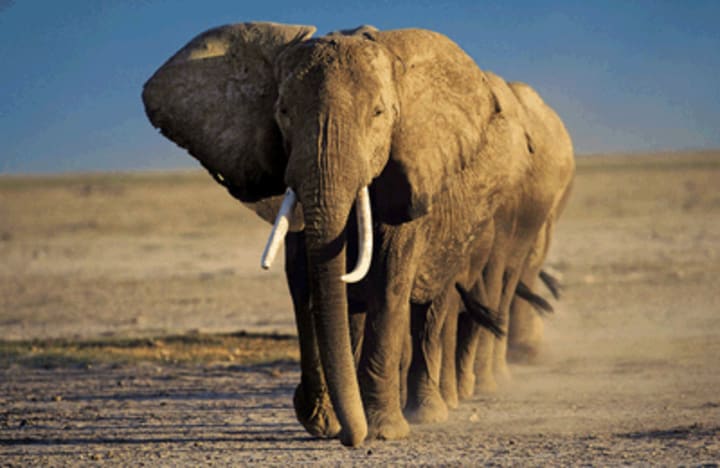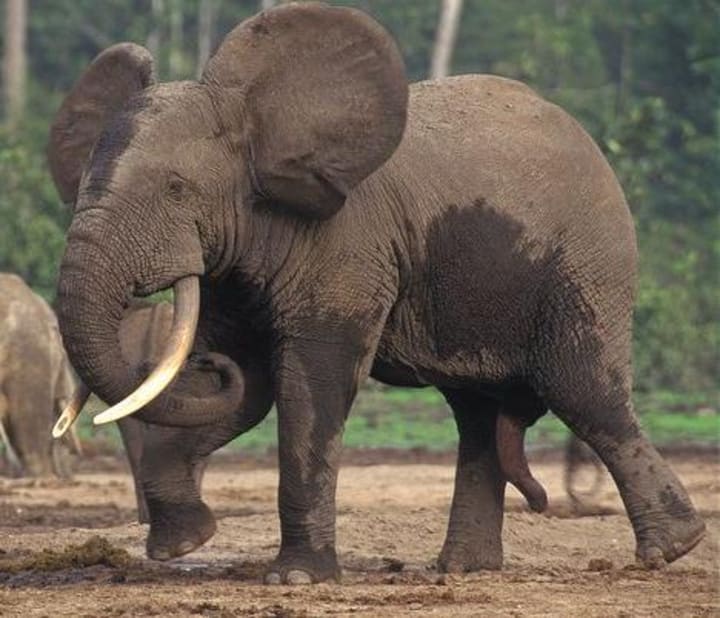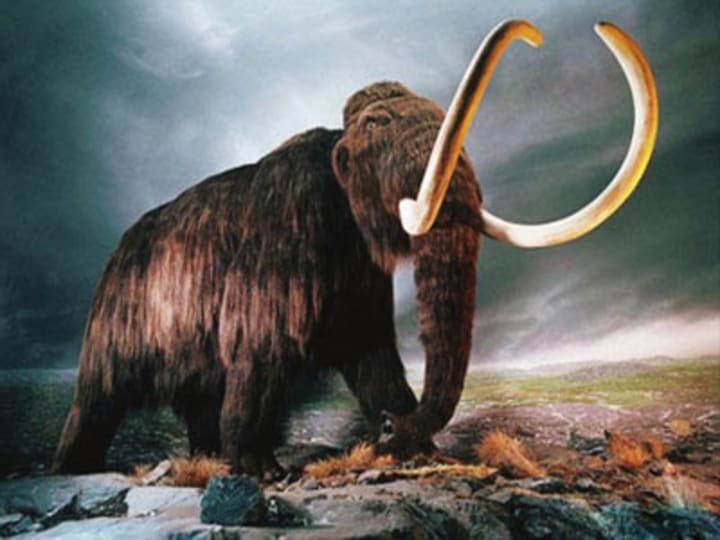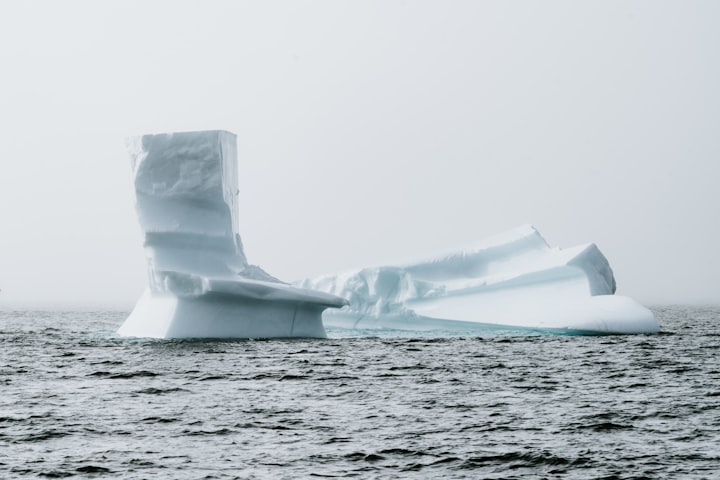Do you know of any elephants around the world?
Elephants are currently the largest mammals on land in the world

Proboscis
There were 6 families of Proboscis, of which 5 families have become extinct, and there are only 1 family, 2 genera, and 2 species of animals in the Elephant family.
Animals in this order as their name ggestsu long noses and finger-like protrusions at the end of the nose, which can pick up small objects. The Elephant family includes 2 genera and 2 species of animals, namely the Asian elephant, and the African elephant.
The elephant is the largest terrestrial mammal in existence, it has developed a sense of smell and hearing, but poor vision. The probosci functions as the arms and fingers take in water and food and deliver it to the mouth.
The huge auricle not only helps to listen carefully but also has the function of cooling. The tusks of males (both males and females of African elephants) are specialized maxillary incisors. Asian elephants have 5 forelimbs, and 4 hind limbs and African elephants have 3 forelimbs.
African elephant

Distributed in central, eastern, and southern Africa.
African elephants live in tropical forests, jungles, and grasslands from sea level to 5,000 meters above sea level, and it is the largest terrestrial mammal in existence. Live in groups, led by a male elephant, diurnal and not settled. Feeds on weeds, leaves, bark, twigs, etc.
The reproductive period is not fixed, the gestation period is about 22 months, and each calf is sexually mature at 13-14 years old, with a life span of 60-70 years. The Beijing Zoo began breeding and exhibiting in 1954.
Listed in the Convention on International Trade in Endangered Species of Wild Fauna and Flora
The African elephant is the largest terrestrial mammal in existence, with a body length of 6-7.5 meters, a tail length of 1-1.3 meters, a shoulder height of 3-4 meters, and a weight of 5-7.5 tons. The highest record is a male with a body length of 10.67 meters, a forefoot circumference of 1.8 meters, and a weight of 11.75 tons. The largest recorded ivory is 350 cm long and weighs about 107 kg.
There are two types of African elephants, the most common is the common African elephant, which is the largest terrestrial animal in the world. It has large ears and pointed lower parts. Both males and females have long and curved tusks. The number is one less than that of Asian elephants), a total of 21 pairs of ribs, a flat back, a length of 6-7.3 meters, a height of 3-4 meters, and a weight of 10 tons. Sex is more ferocious, especially lonely male elephants are more ferocious and difficult to tame.
Another African elephant is the endangered forest elephant. It is smaller, generally no more than 2.5 meters high, with round ears, long and narrow mandibles, 5 toes on the front feet, and 4 toes on the hind feet. It is the same as the Asian elephant and has small tusks. While straight, the texture is harder. According to recent genetic analysis, it has been confirmed that it is not the same species as the common African elephant.

Asian Elephant
English name: Indian elephant
Distributed in southern Yunnan Province, China. Abroad is found in South and Southeast Asia.
Asian elephants (aka elephants) live in tropical forests, jungles, or grasslands. They live in groups, are led by a female elephant, have no fixed habitat, and are diurnal. Sensitive smell and hearing, poor vision, likes water baths when it is hot. Foraging in the morning and evening, it feeds on weeds, leaves, bamboo leaves, wild fruits, etc.
The reproductive period is not fixed, the gestation period is 20-22 months, each cub is born, sexually mature at 9-12 years old, and the life span is 60-70 years. The Beijing Zoo was raised and exhibited in 1951, and it was successfully bred in 1964.
It is a Chinese-level protected animal and is included in the Convention on International Trade in Endangered Species of Wild Fauna and Flora.
There are only one species of the Asian elephant, also called the Indian elephant. It is distributed in South and Southeast Asia. There is a finger-like protrusion on the nose. Female elephants have no ivory. The front feet have 5 toes, the hind feet have 4 toes, a total of 19 pairs of ribs (of which the Sumatran subspecies has 20 pairs, but one less than the African elephant), the skull has two protrusions, and the back is arched. Mild temperament, relatively easy to tame. In the past, it can be divided into 4 subspecies: Indian elephant, Ceylon elephant, Malaysian elephant, and Sumatran elephant.
In addition to several subspecies, Malaysia has an Asian elephant subspecies - the pygmy elephant, which is even smaller. There is a subspecies of African elephants in Namibia, the desert elephant. The pads under the feet become larger, and it is more suitable for the life of water shortage.
mammoth

The Mammoth, which means "underground dweller" in Tatar, was once the largest elephant in the world.
It is tall and strong, with thick legs, four toes on its feet, a particularly large head, and a pair of curved front teeth growing out of its mouth.
A mature mammoth is 5 meters long, about 3 meters high, about 1.5 meters long in incisors, and weighs 4 to 5 tons. It is covered with fine long black hair and has thick skin with an extremely thick layer of fat, up to 9 cm thick.
Judging from the body structure of the mammoth, it has a strong ability to keep out the cold. Unlike modern elephants, they did not live in the tropics or subtropics, but as ancient mammals that lived in the cold climate of the north.
Similar in size to modern elephants, but with a shorter and taller skull.
Body covered with long brown hair. There are no lower incisors, the upper incisors are long and curl upward and outward.
The molars are composed of many tooth plates, the tooth plates are closely arranged, there are about 30 plates, and there is a developed chalk layer between the plates. It once lived in the cold regions of the late Pleistocene in Asia, northern Europe, and northern North America.
In the permafrost layers of northern Siberia in the Soviet Union and the Alaska Peninsula in North America, intact individuals with flesh and skin have been found, and locally grown tundra plants are still preserved in their stomachs.
And because it has been protected and buried by ice and snow in the crypt for thousands of years, it can be completely preserved.
The frozen carcass of this animal has been found more than once in the permafrost and ice of Alaska and Siberia.
About the Creator
Flagler Danzig
The talent is 1% inspiration adds on 99% sweat, certainly, does not have that 1% inspiration, in the world all sweat to put or bring together also only is the sweat!






Comments
There are no comments for this story
Be the first to respond and start the conversation.